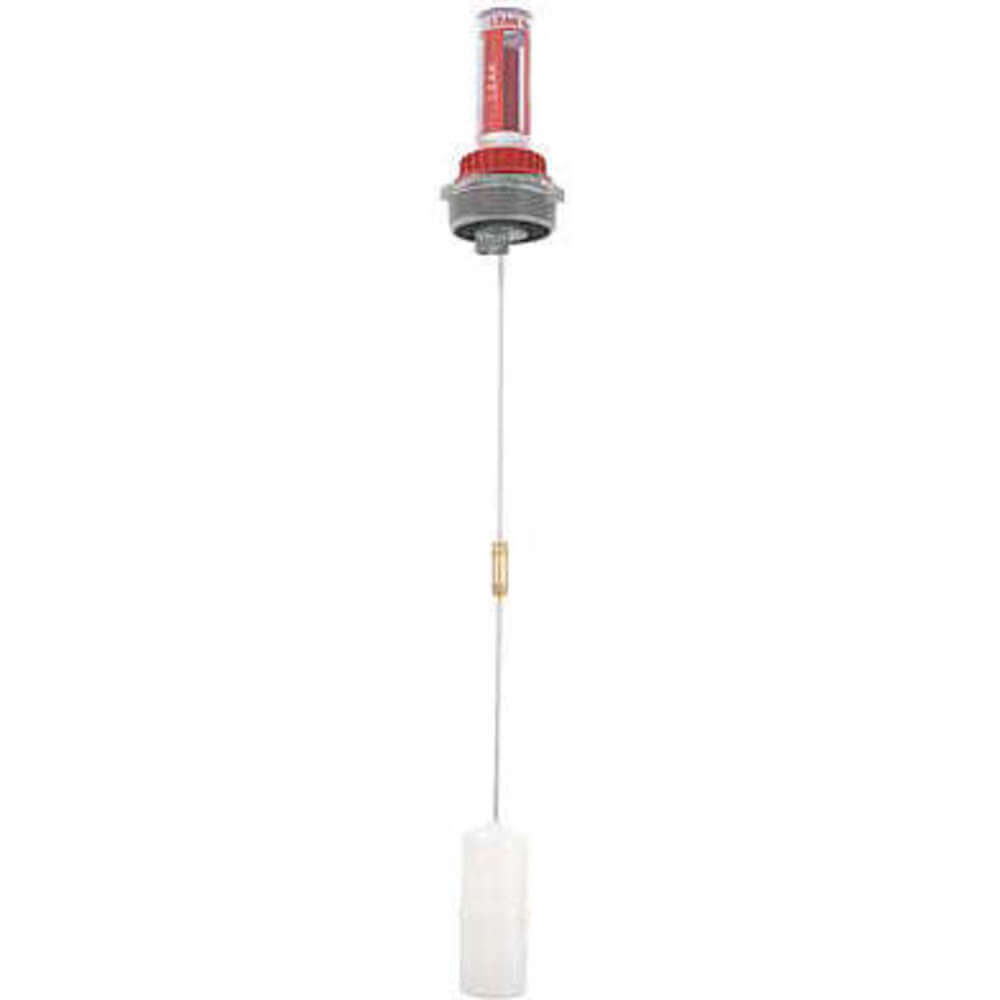Krueger K-1.5-72 leak detection gauge is a trustworthy vertical type leak monitor to find leaks in the annular / interstitial area of double wall above-ground containment tanks. It is ideal for the chemical, petroleum, wastewater, aircraft and agricultural industries.
Working Mechanism:
- This gauge is a simple visual aid.
- If the red indication moves into the viewing window, it means that your double-wall containment system leaks.
- Check the calibration after installation to keep an eye on the interstitial space.
- The indicator's calibration is off. It only tells if there is a leak or not.
Features:
- This Krueger leak gauge, K-1.5-72 includes aluminium rods & bushing, an HDPE Float and plastic calibration.
- It has a refined mechanical design for simple installations, durability and inexpensive upfront expenses.
- This model has a 1.5 inch NPT male connection size that can read out measurements for standard tanks of depths up to 72 inches.
Compatible Accessories:
- Krueger Drum Alarms: These Dalarm (direct mount) and Ralarm (Remote mount) units provide visual as well as audible indication of tank levels. They feature a magnetic switch that triggers a 110-dB alarm and are powered by a 9-volt lithium battery. These models can be easily reset even in Alarm mode.
- Krueger LED At-A-Glance Accessories: They offer the remote reading capability to the mechanical gauge.
- Krueger Guard Gauge: This cover protects the exposed plastic components on top of the gauge.
- Krueger Glass Calibration: It offers protection against heat, gases and deterioration. It also aids in passing fire inspections.
Frequently Asked Questions:
Q. How to install a tank overfill alert gauge?
A.
- Connect rods together with a connector.
- Press on the top of the connector to disassemble.
- Make sure that the connection is secure, lower into the monitoring space and then thread in the bushing.
Q. When a leak detection gauge fails?
A.
- The calibration assembly located on the tank's outside may damage and become illegible or worn.
- The connecting rods can separate or sustain damage as they expand into the tank.
- The float that rests at the gauge's base may fall off or become product-saturated (leak).
Q. How to maintain this Krueger K-1.5-72 leak detection gauge?
A.
- Once a month: Check the calibration is visible, legible and undamaged on the top of the unit once a month. (Instead of needing to replace the gauge entirely, these top components are simply replaced).
- Once every six months: Carefully remove the device from the tank after unthreading it. From the red indication down to the float, make sure that all the rods are joined together as a single unit. Additionally, check the float for leaks or damage. Manually raising the float arm from empty to full will check that everything is in working order and that the red indication travels freely up and down with the movement of the float rod.
 Change Country
Change Country


